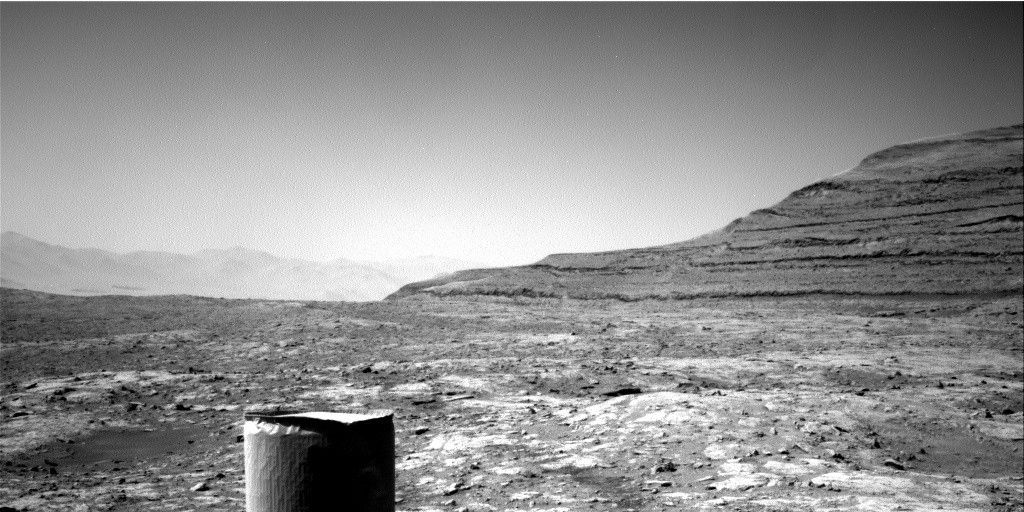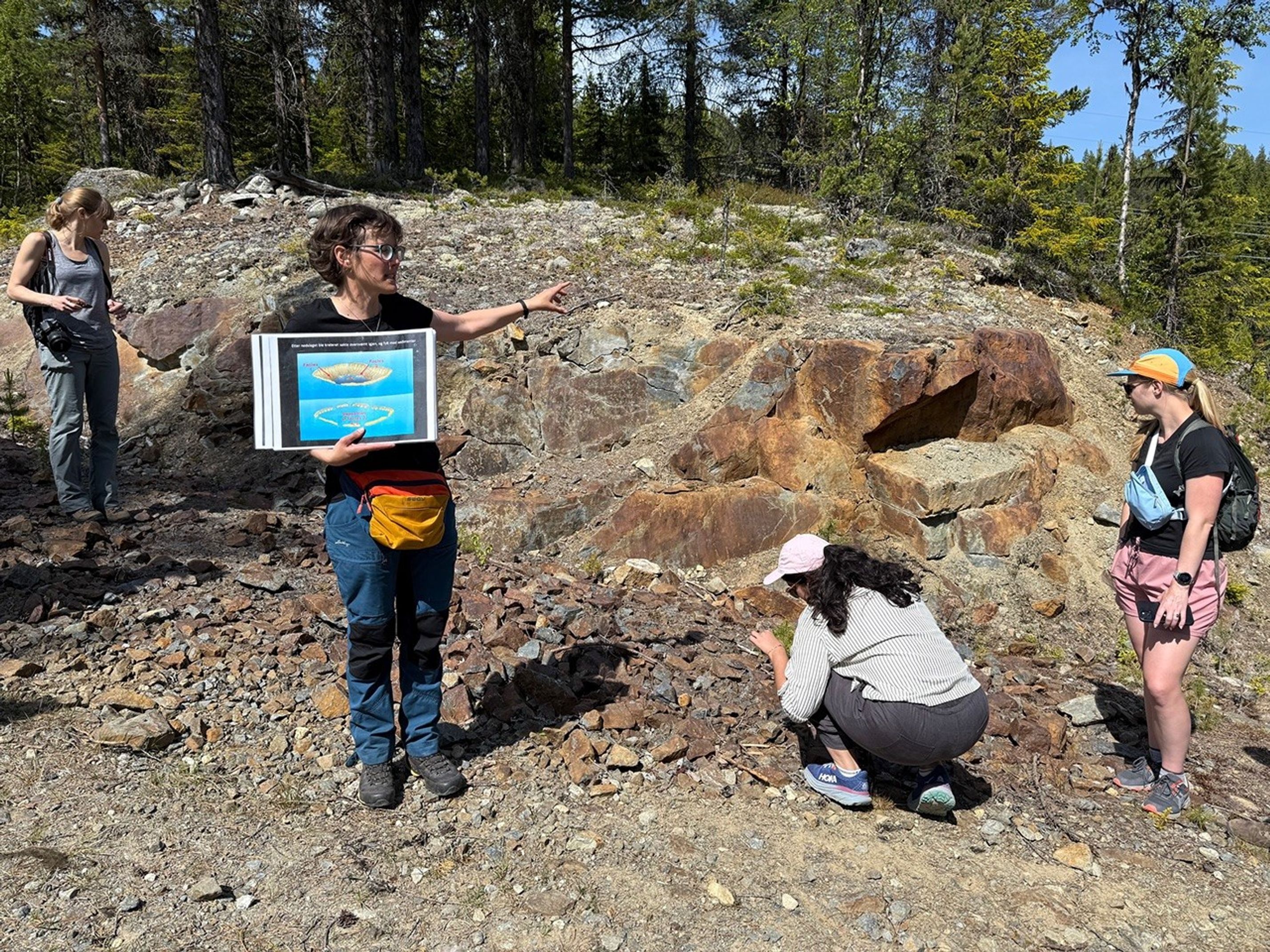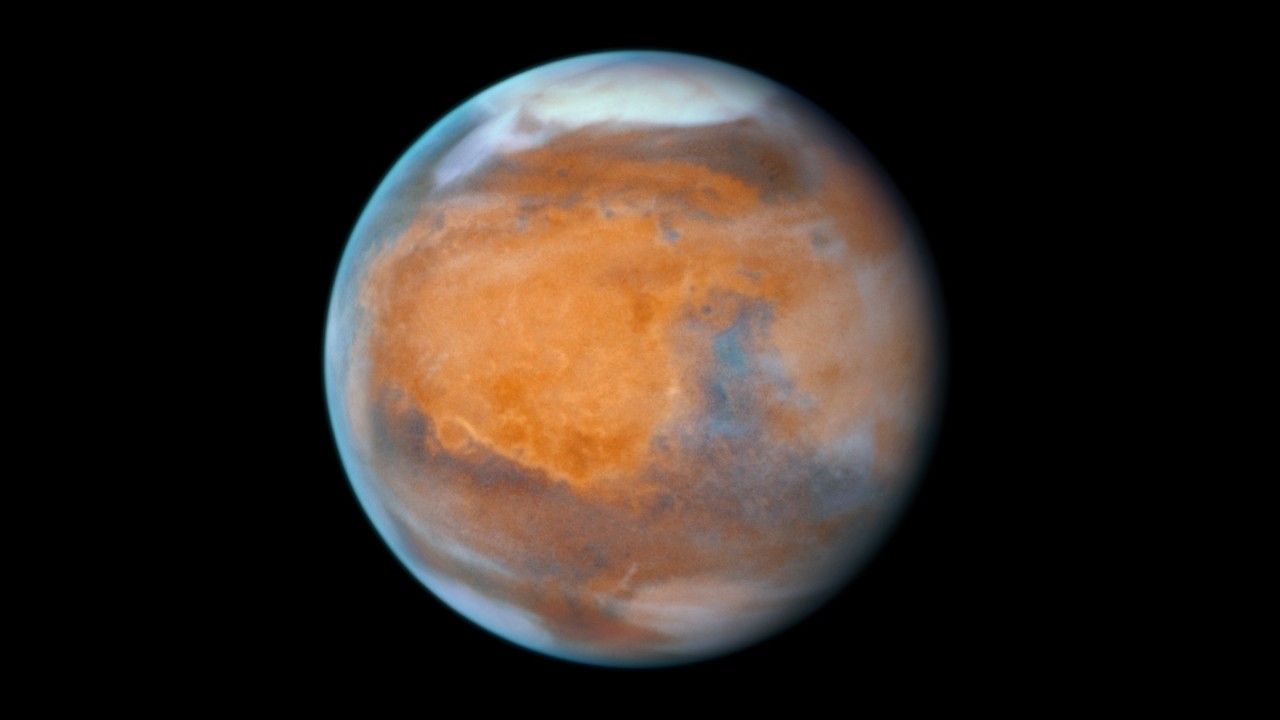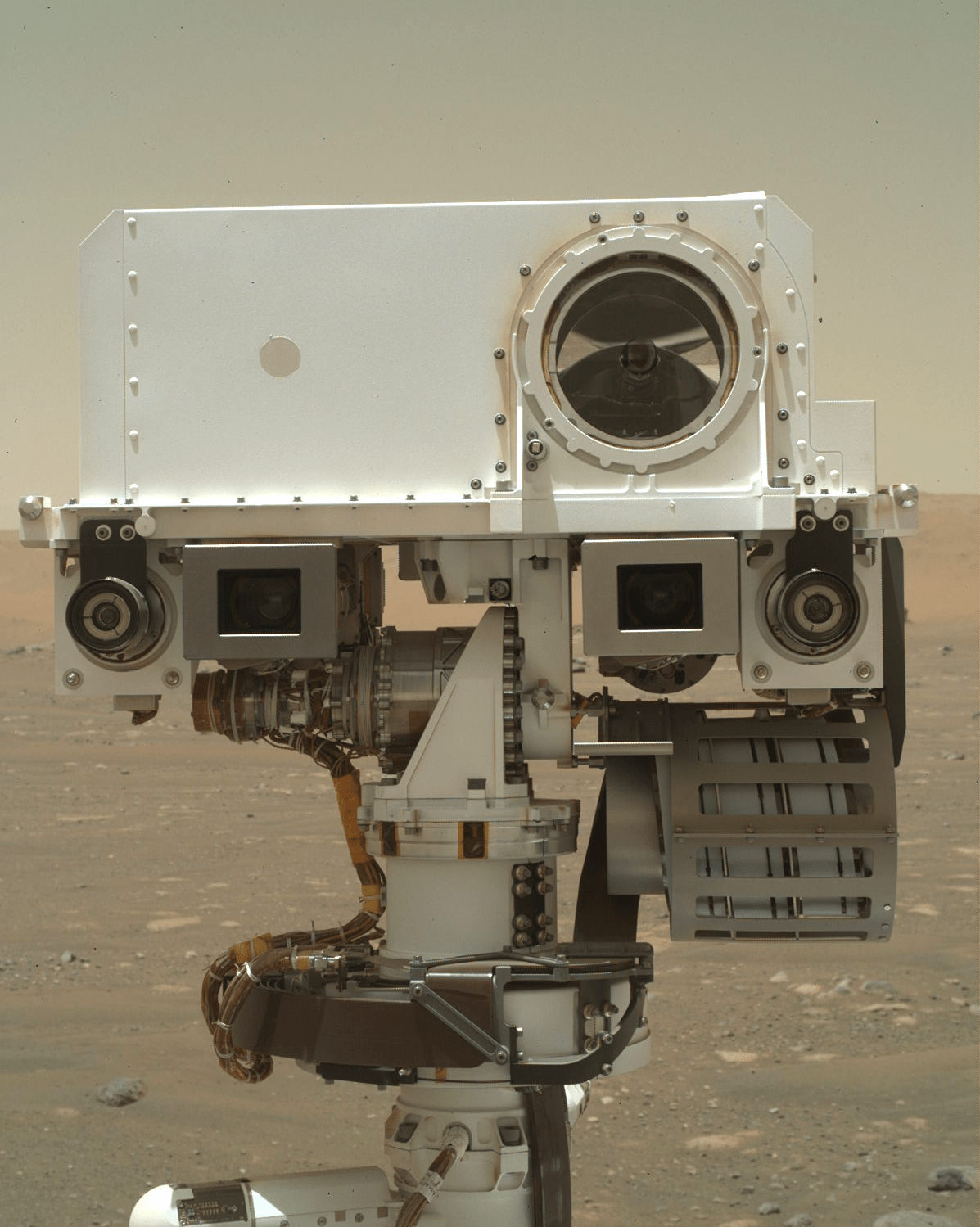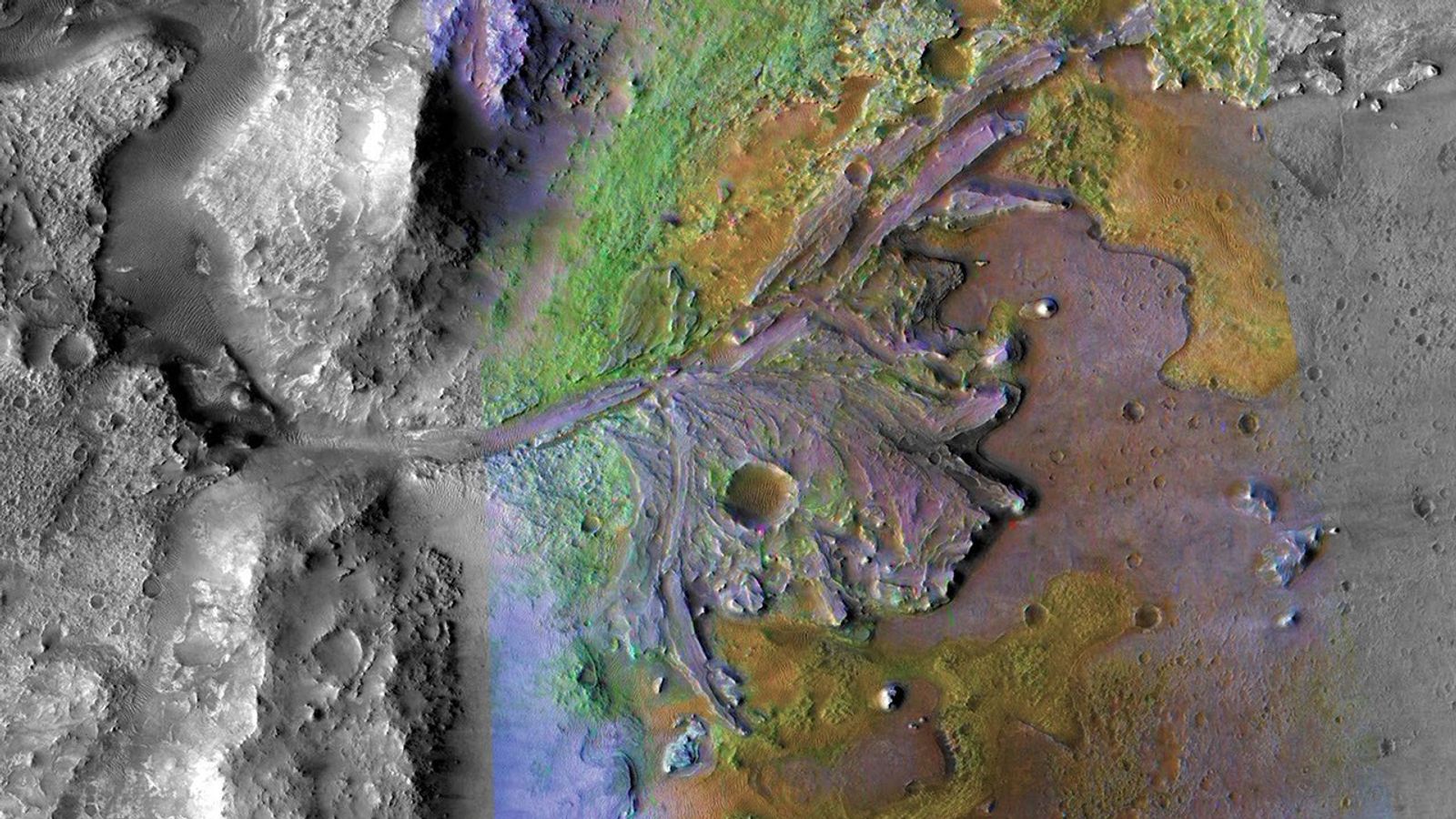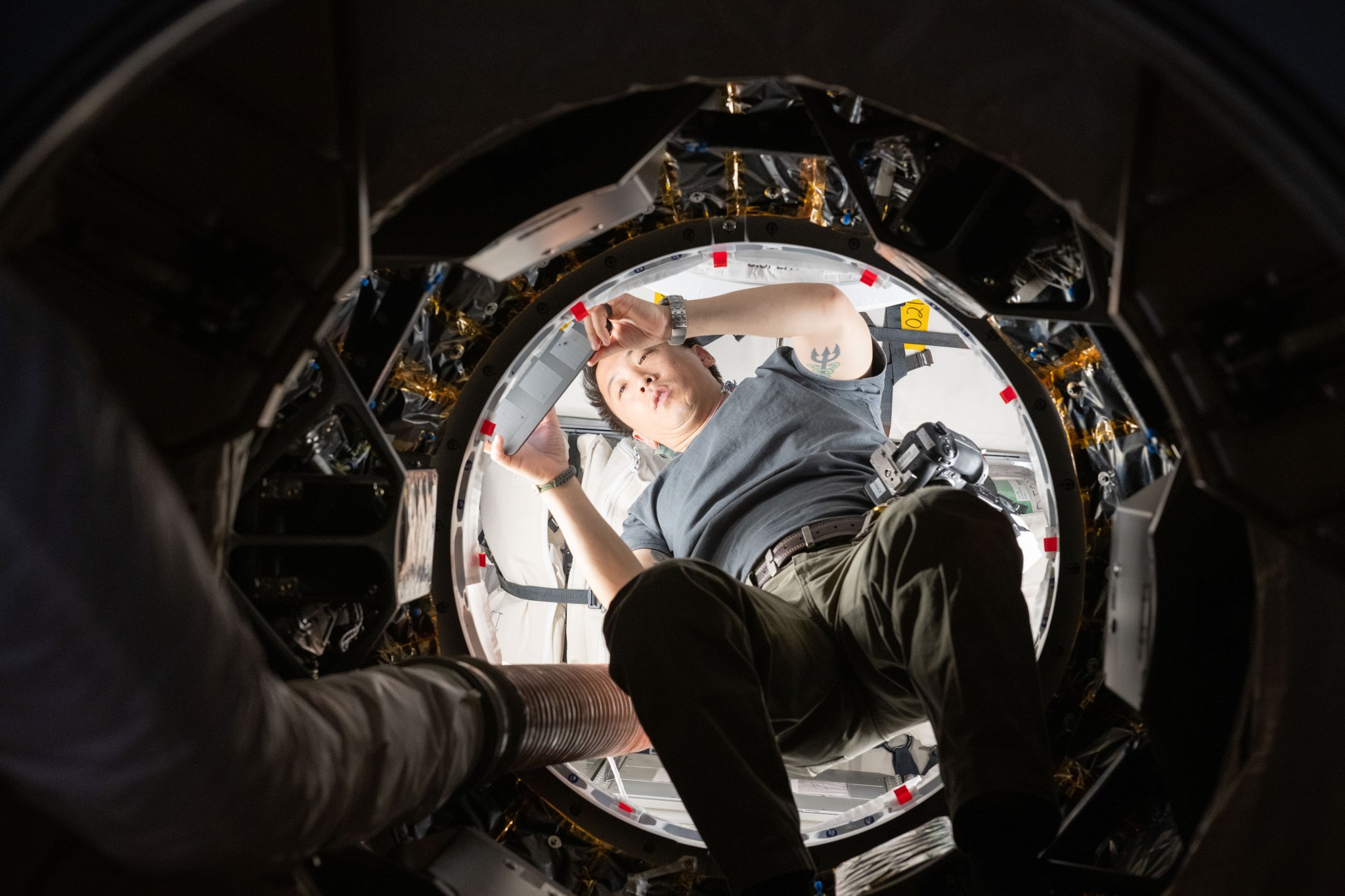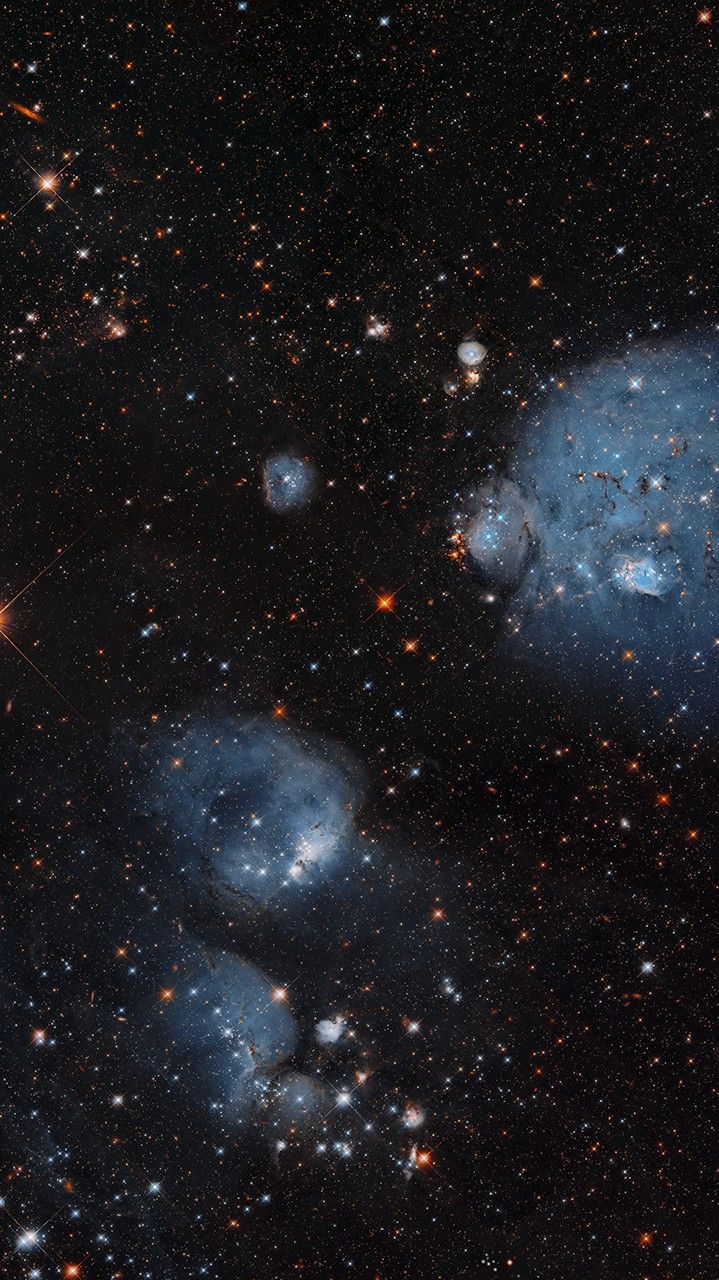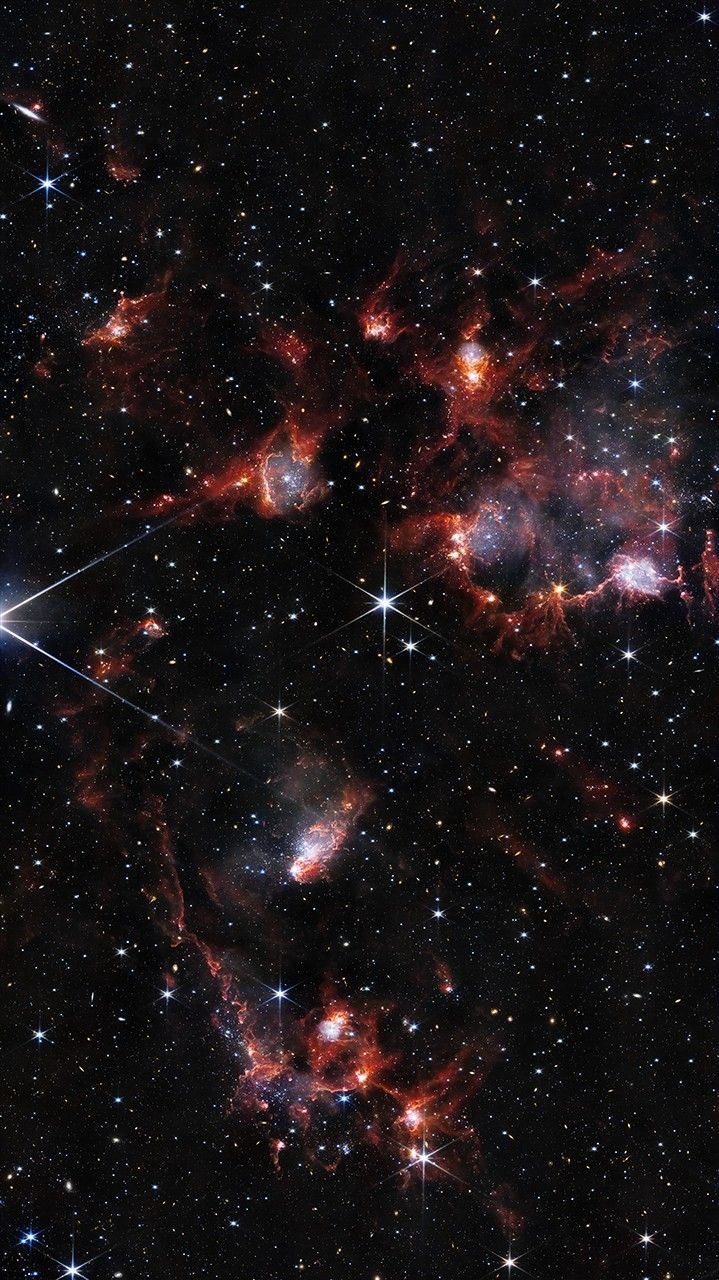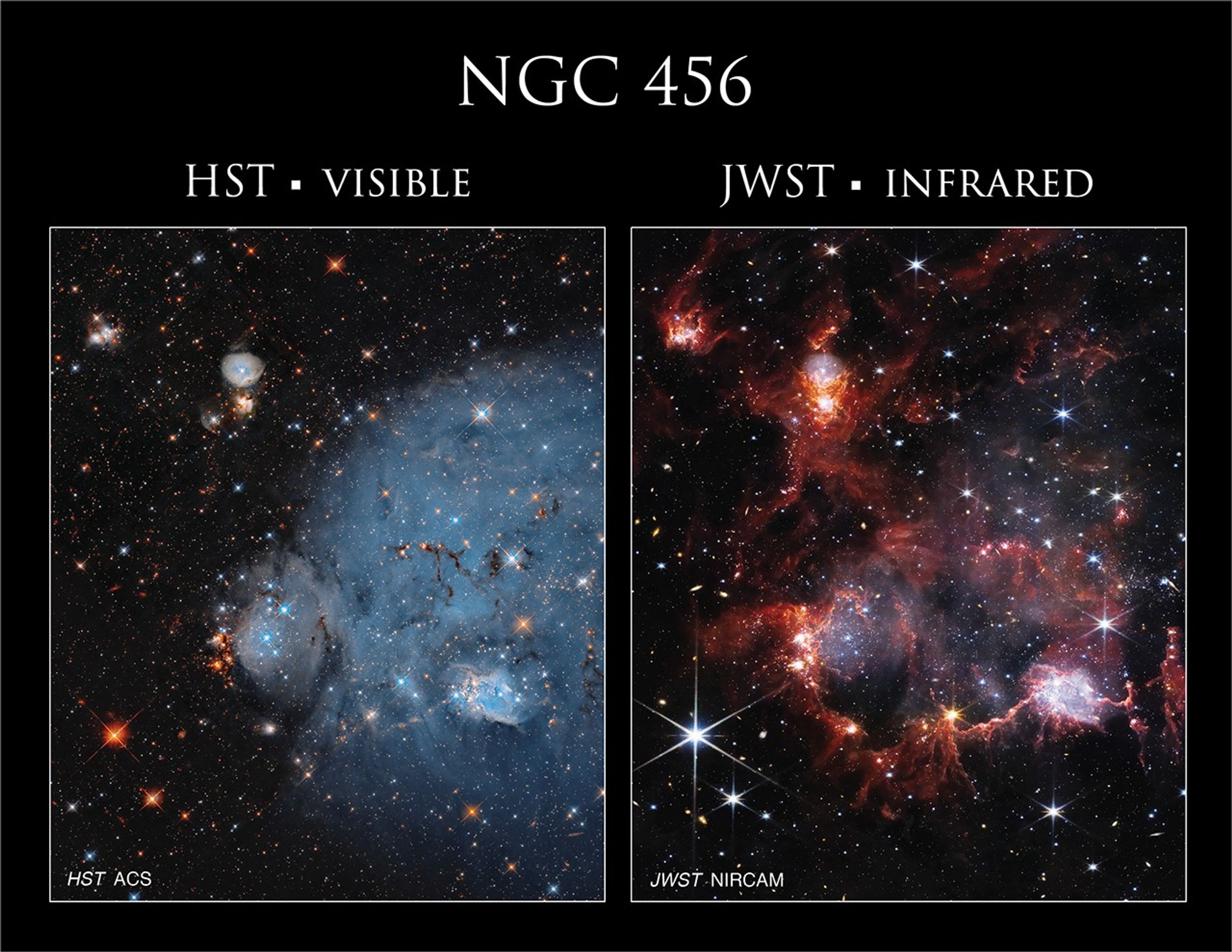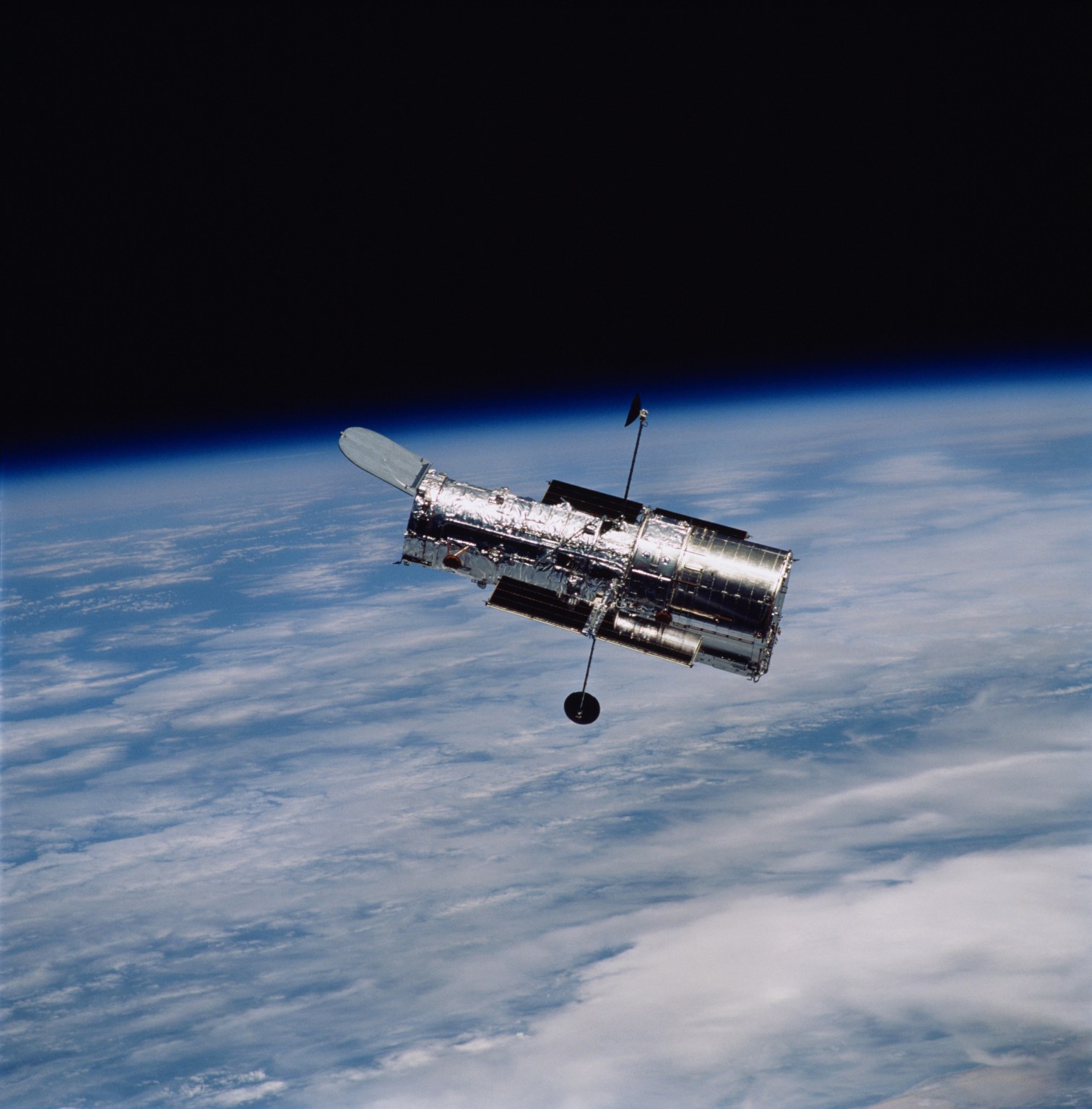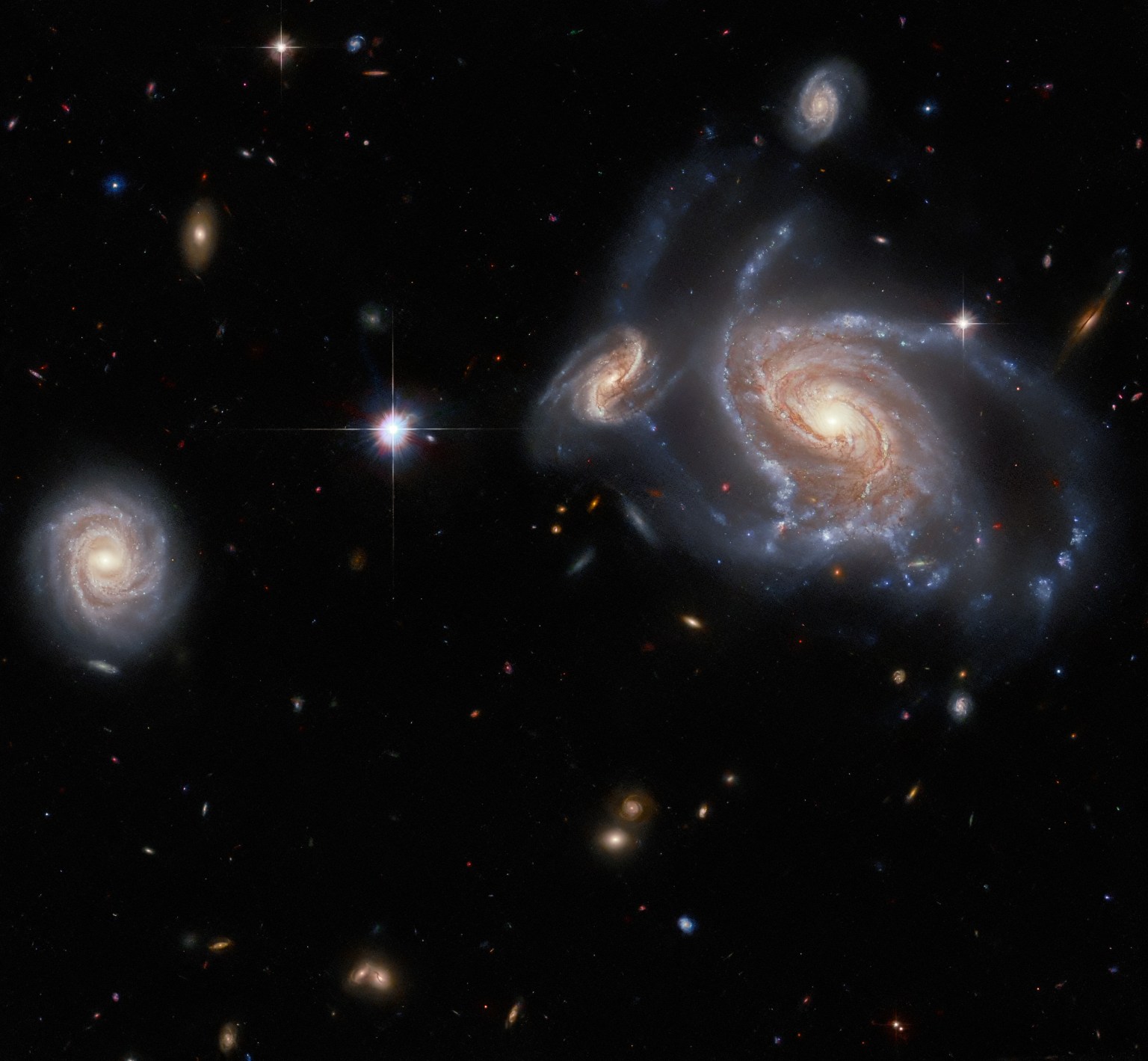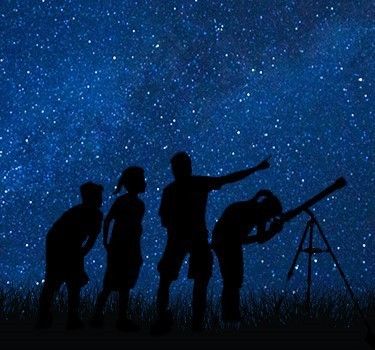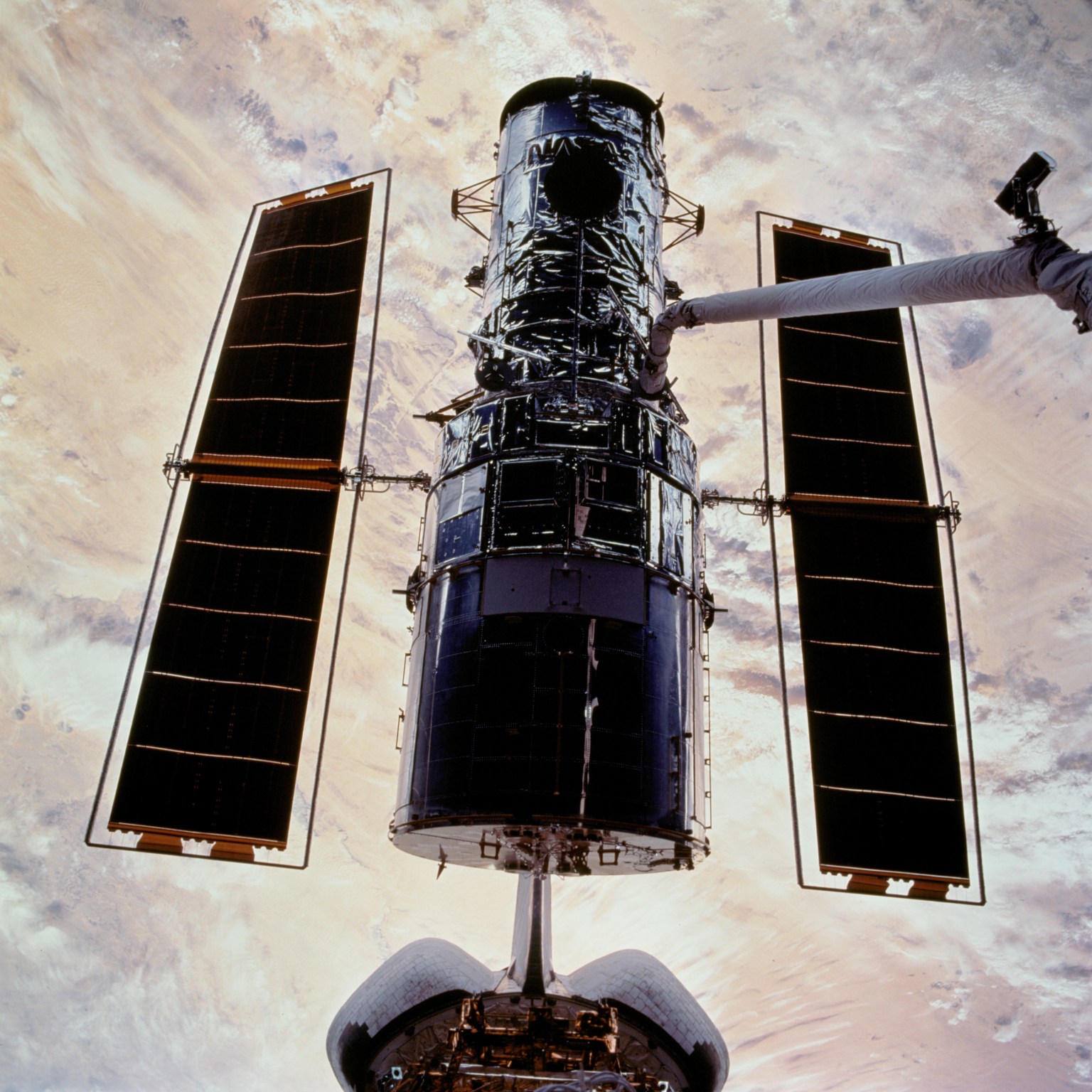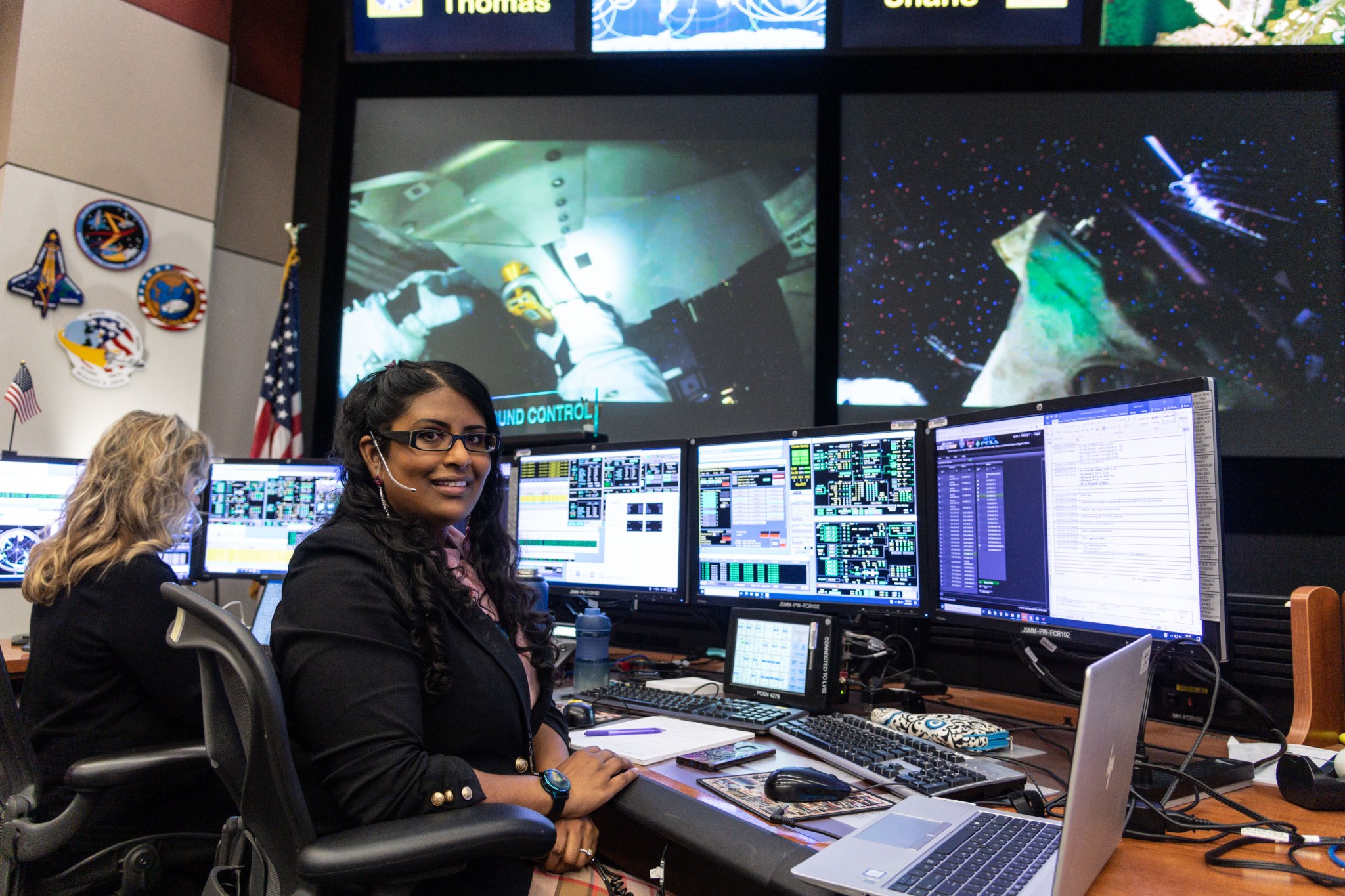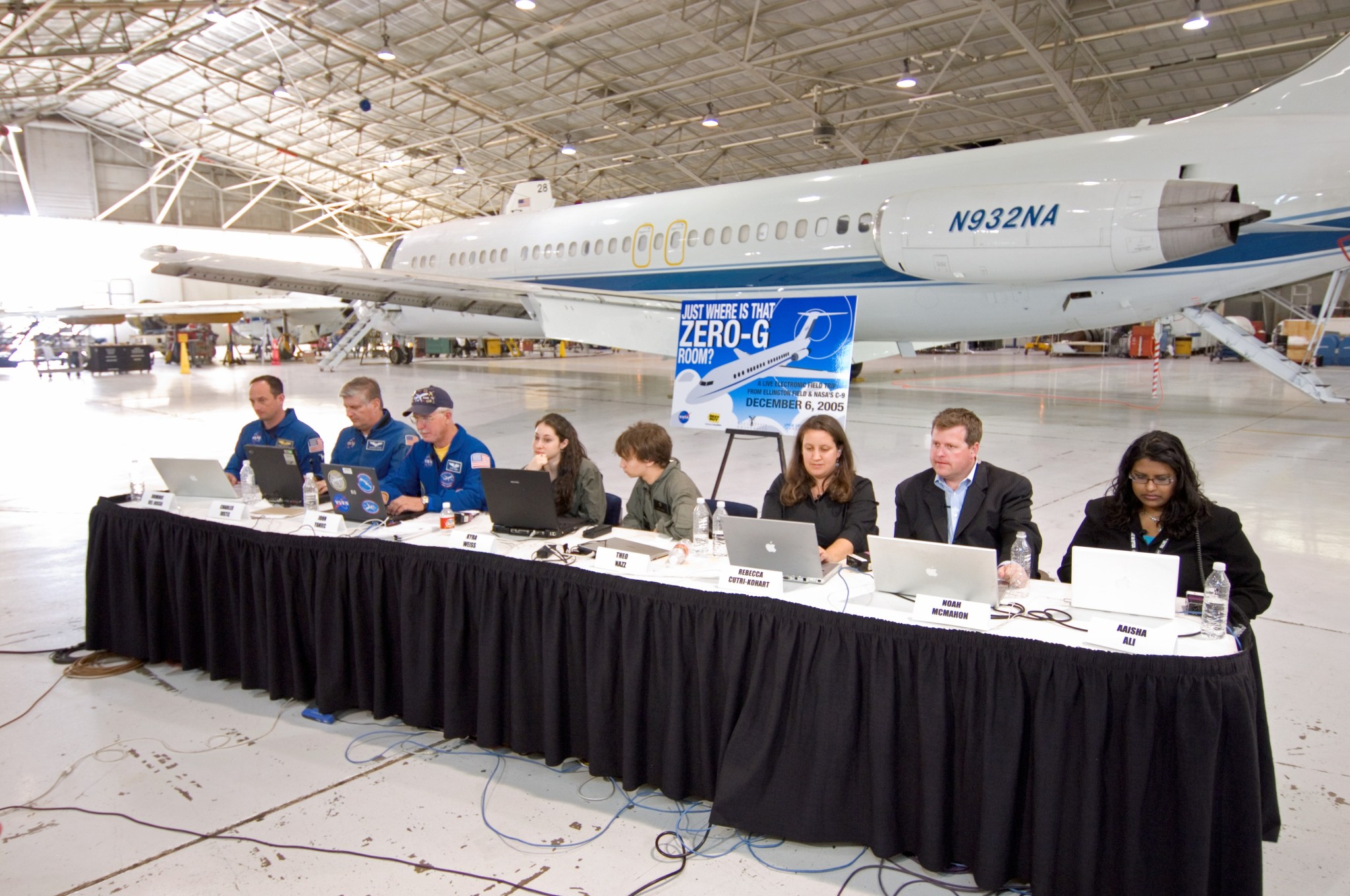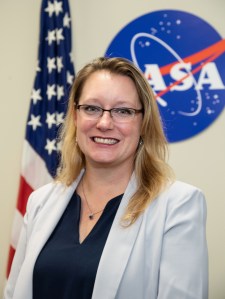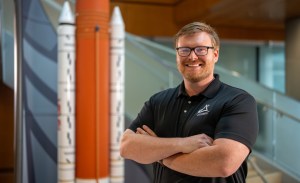📰 Trending Topics
Google News - Trending
Mizzou Hoops trending for a 5-star commitment? - Rock M Nation
2025-07-07 10:00
Google News - Technology
Apple’s latest AirPods are already on sale for $99 before Prime Day - The Verge
2025-07-07 17:25
- Apple’s latest AirPods are already on sale for $99 before Prime Day The Verge
- The 10+ Best Prime Day Apple Deals The New York Times
- Big news: Apple AirPods Pro 2 are now under $160 ahead of Prime Day USA Today
- Walmart Is Selling Apple AirPods Pro 2 for Just $149 Today, Beating the Previous Best Deal by $20 IGN
- Apple's USB-C AirPods Max are cheaper than ever in this Prime Day deal Engadget
Galaxy Z Fold 7 will reportedly be the thinnest one yet - Engadget
2025-07-07 15:39
- Galaxy Z Fold 7 will reportedly be the thinnest one yet Engadget
- We've got more info on Samsung's next-gen foldables – and there aren't many upgrades TechRadar
- Hands-on video reveals Galaxy Z Flip 7's stunning new cover display SamMobile
- Samsung is about to find out if Ultra is enough The Verge
- What to Expect from Samsung Unpacked in July 2025 IGN
Unless users take action, Android will let Gemini access third-party apps - Ars Technica
2025-07-07 23:46
- Unless users take action, Android will let Gemini access third-party apps Ars Technica
- Google Confirms AI Update For All Android Users Forbes
- Google Gemini can now more easily access your Messages – here’s why that’s a good thing TechRadar
- Gemini may soon let you send images in texts, thanks to RCS (APK teardown) Android Authority
- Google Gemini can now use your smartphone and send WhatsApp messages NEWS.am TECH
NASA - Breaking News
Curiosity Blog, Sols 4589 – 4592: Setting up to explore Volcán Peña Blanca
2025-07-07 23:21
Written by Abigail Fraeman, Deputy Project Scientist at NASA’s Jet Propulsion Laboratory
Earth planning date: Thursday, July 3, 2025
The team was delighted this morning to learn that Wednesday’s drive had completed flawlessly, placing us in a stable position facing a ~3 foot high ridge located ~35 feet away. This ridge is the eastern edge of a feature the team has informally named “Volcán Peña Blanca.” This feature certainly looked intriguing in orbital images, but once we saw Curiosity’s pictures of it from the ground, we decided it was cool enough to spend the time to investigate it closer. The images from the ground show a lot more detail than is visible in orbit, including clear sedimentary structures exposed along the ridge face which could provide important clues about how the rocks in the boxwork-bearing terrain were initially deposited – dunes? Rivers? Lakes? The team picked their favorite spot to approach the ridge and take a closer look during Wednesday’s planning, so Curiosity made a sharp right turn to take us in that direction. Using today’s images, we refined our plan for the exact location to approach and planned a drive to take us there, setting us up for contact science on Monday.
We had the opportunity to plan four sols today, to cover the U.S. 4th of July holiday weekend, so there was lots of time for activities besides the drive. Curiosity is currently sitting right in front of some light toned rocks, including one we gave the evocative name “Huellas de Dinosaurios.” It’s extremely unlikely we’ll see dinosaur footprints in the rock, but we will get the chance to investigate it with APXS, MAHLI, and ChemCam. We also have a pair of ChemCam only targets on a more typical bedrock target named “Amboro” and some pebbles named “Tunari.” Mastcam will take a high resolution of mosaic covering Volcán Peña Blanca, some nearby rocks named “Laguna Verde,” a small light colored rock named “Suruto,” and various patterns in the ground. Two ChemCam RMI mosaics of features in the distant Mishe Mokwa face and environment monitoring activities round out the plan.
Curiosity Blog, Sol 4588: Ridges and troughs
2025-07-07 22:27
Written by Lucy Thompson, APXS Collaborator and Senior Research Scientist at the University of New Brunswick, Canada
Earth planning date: Wednesday, July 2, 2025
As we traverse the boxwork terrain, we are encountering a series of more resistant ridges/bedrock patches, and areas that are more rubbly and tend to form lower relief polygonal or trough-like features. We came into planning this morning in one of the trough-like features after another successful drive. The science team is interested in determining why we see these different geomorphological and erosional expressions. Is the rock that comprises the more resistant ridges and patches a different composition to the rock in the troughs and low relief areas? How do the rocks vary texturally? Might the resistant bedrock be an indicator of what we will encounter when we reach the large boxworks that we are driving towards?
We managed to find a large enough area of rock to safely brush (target – “Guapay”), after which we will place APXS and MAHLI to determine the composition and texture. ChemCam will also analyze a different rock target, “Taltal” for chemistry and texture, and we will also acquire an accompanying Mastcam documentation image. The resistant ridge that we are planning to drive towards (“Volcan Pena Blanca”) and eventually investigate will be captured in a Mastcam mosaic. ChemCam will utilize their long-distance imaging capabilities to image the “Mishe Mokwa” butte off to the southeast of our current location, which likely contains bedrock layers that we will eventually pass through as we continue our climb up Mount Sharp.
After a planned drive, taking us closer to the “Volcan Pena Blanca” ridge, MARDI will image the new terrain beneath the wheels, before we execute some atmospheric observations. Mastcam will make a tau observation to monitor dust in the atmosphere and Navcam will acquire a zenith movie. Standard DAN, RAD and REMS activities round out the plan.
Working in Space
2025-07-07 18:57
In this May 23, 2025, image, NASA astronaut Jonny Kim works inside the SpaceX Dragon cargo spacecraft completing cargo operations before it undocked from the International Space Station’s Harmony module several hours later. Kim launched to the International Space Station on April 8, 2025; this is his first mission.
See what Kim and other space station crew do aboard the orbital lab.
Image credit: NASA; JAXA (Japan Aerospace Exploration Agency)/Takuya Onishi
NASA’s Hubble and Webb Telescopes Reveal Two Faces of a Star Cluster Duo
2025-07-07 14:58
3 min read
NASA’s Hubble and Webb Telescopes Reveal Two Faces of a Star Cluster Duo
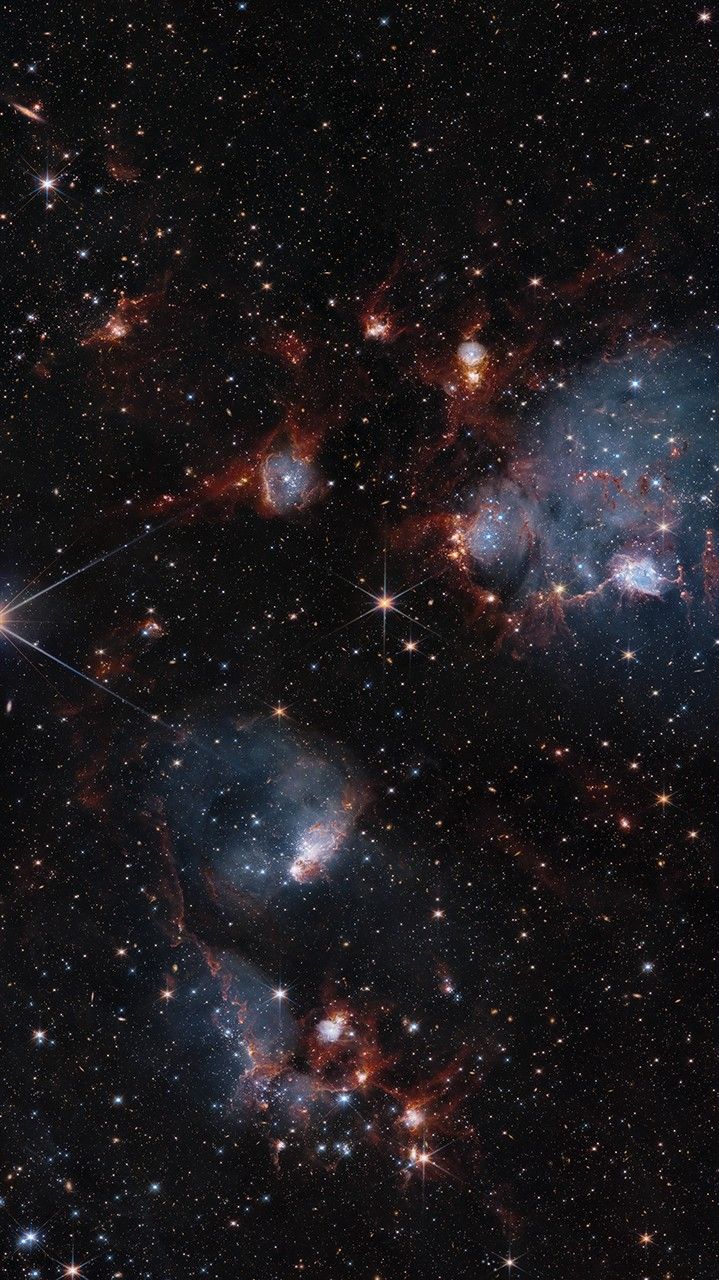
A riotous expanse of gas, dust, and stars stake out the dazzling territory of a duo of star clusters in this combined image from NASA’s Hubble and Webb space telescopes.
Open clusters NGC 460 and NGC 456 reside in the Small Magellanic Cloud, a dwarf galaxy orbiting the Milky Way. Open clusters consist of anywhere from a few dozen to a few thousand young stars loosely bound together by gravity. These particular clusters are part of an extensive complex of star clusters and nebulae that are likely linked to one another. As clouds of gas collapse, stars are born. These young, hot stars expel intense stellar winds that shape the nebulae around them, carving out the clouds and triggering other collapses, which in turn give rise to more stars.
In these images, Hubble’s view captures the glowing, ionized gas as stellar radiation blows “bubbles” in the clouds of gas and dust (blue), while Webb’s infrared vision highlights the clumps and delicate filamentary structures of dust (red). In Hubble images, dust is often seen silhouetted against and blocking light, but in Webb’s view, the dust – warmed by starlight – shines with its own infrared glow. This mixture of gas and dust between the universe’s stars is known as the interstellar medium.
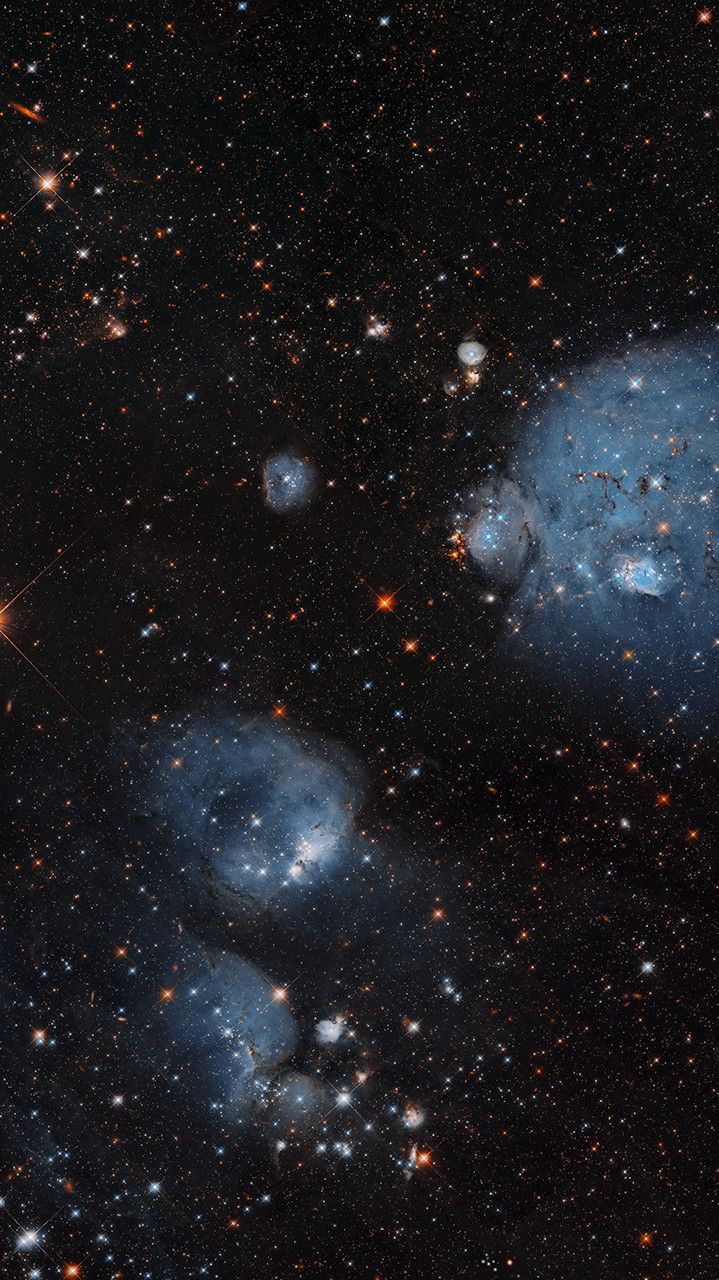
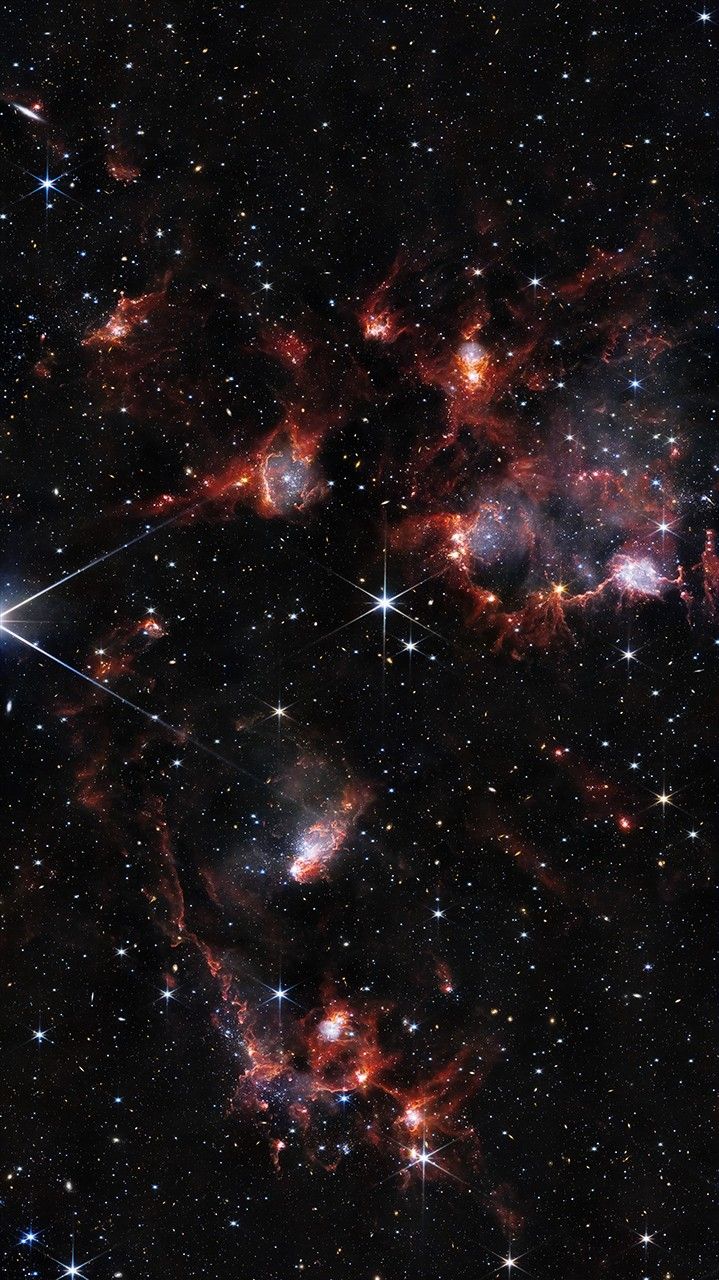


Hubble (ACS)
Webb (NIRCAM)
Hubble and Webb view a duo of open star clusters
The nodules visible in these images are scenes of active star formation, with stars ranging from just one to 10 million years old. In contrast, our Sun is 4.5 billion years old. The region that holds these clusters, known as the N83-84-85 complex, is home to multiple, rare O-type stars, hot and extremely massive stars that burn hydrogen like our Sun. Astronomers estimate there are only around 20,000 O-type stars among the approximately 400 billion stars in the Milky Way.
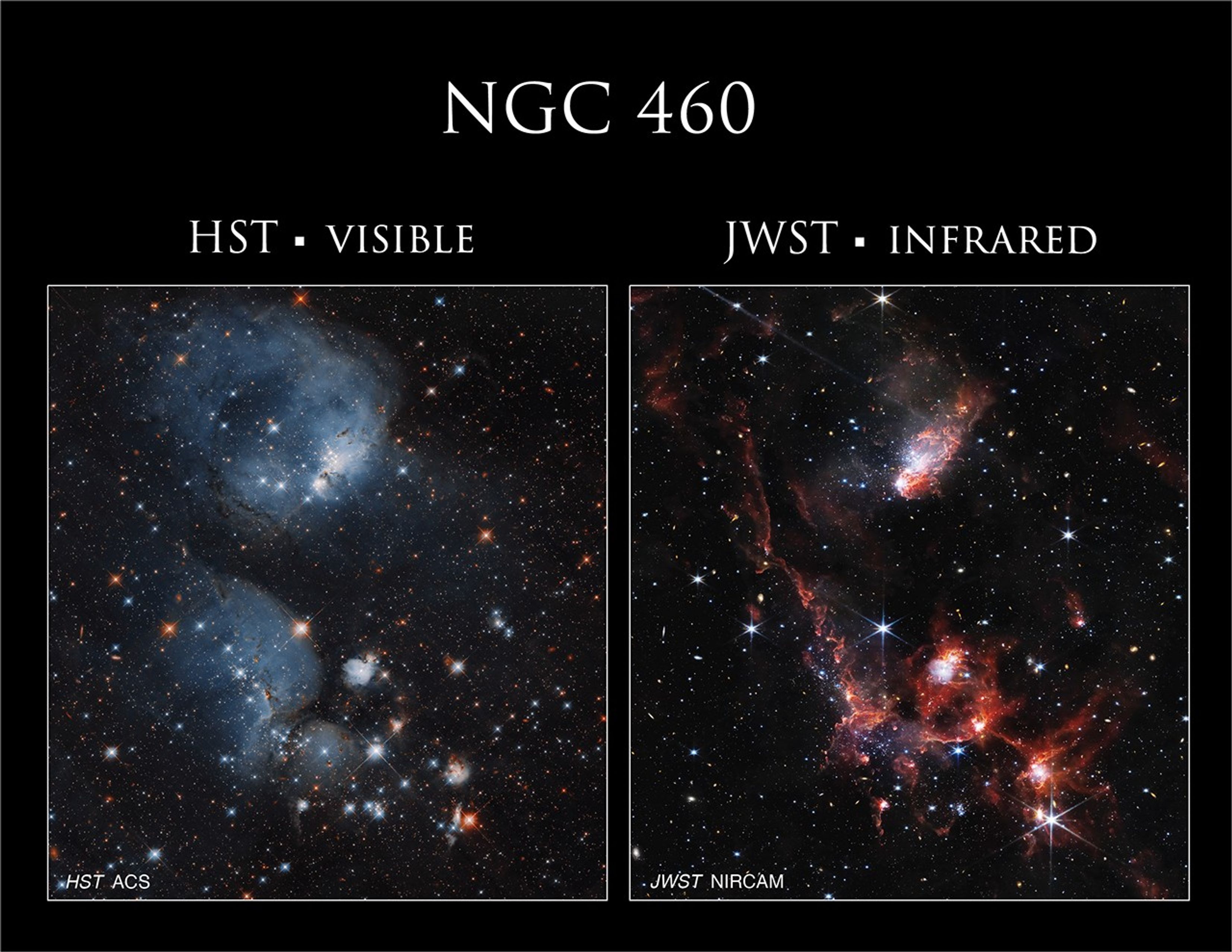
The Small Magellanic Cloud is of great interest to researchers because it is less enriched in metals than the Milky Way. Astronomers call all elements heavier than hydrogen and helium – that is, with more than two protons in the atom’s nucleus – “metals.” This state mimics conditions in the early universe, so the Small Magellanic Cloud provides a relatively nearby laboratory to explore theories about star formation and the interstellar medium at early stages of cosmic history. With these observations of NGC 460 and NGC 456, researchers intend to study how gas flows in the region converge or divide; refine the collision history between the Small Magellanic Cloud and its fellow dwarf galaxy, the Large Magellanic Cloud; examine how bursts of star formation occur in such gravitational interactions between galaxies; and better understand the interstellar medium.
Explore More
Media Contact:
Claire Andreoli
NASA’s Goddard Space Flight Center, Greenbelt, MD
claire.andreoli@nasa.gov
Aaisha Ali: From Marine Biology to the Artemis Control Room
2025-07-07 10:00
As humanity prepares to return to the lunar surface, Aaisha Ali is behind the scenes ensuring mission readiness for astronauts set to orbit the Moon during Artemis II.
Ali is the Artemis ground control flight lead at NASA’s Johnson Space Center in Houston. She makes sure her team has the resources needed for the next giant leap to the Moon and beyond.
My passion has always been science. I started by exploring the ocean, and now I get to help explore the stars.

Aaisha Ali
Artemis Ground Control Flight Lead
Ali received a bachelor’s degree in biology from Texas A&M University at Galveston before beginning a career as a marine biologist. Her curiosity about science and communication eventually led her from studying marine life to sharing NASA’s mission with the public. With a robust skill set that includes public relations, media relations, and strategic communications, she went on to work at Space Center Houston and later at Johnson on the protocol and digital imagery teams.
Today, Ali leads the ground control team supporting Artemis II, ensuring that systems, simulations, and procedures are ready for the mission. Her role includes developing flight rules, finalizing operations plans and leading training sessions – known as “network sims” – that prepare her team to respond quickly and effectively.
“Because I’ve had a multifaceted career path, it has given me a different outlook,” she said. “Diversity of mindsets helps us approach problems. Sometimes a different angle is exactly what we need.”
Her perspective was also shaped by visits to her grandmother in the Caribbean as a child. “She lived in the tropical forest in a small village in Trinidad,” Ali said. “I was fortunate enough to spend summers on the island and experience a different way of life, which has helped me grow into the person I am today.”
Communication, she explained, is just as critical as technical expertise. “When we report to the flight director, we are the experts in our system. But we have to be clear and concise. You don’t get a lot of time on the flight loop to explain.”
That clarity, humility, and sense of teamwork are values Ali says have shaped her journey.
We don’t do it by ourselves. Everyone — from our engineers to custodial staff to cafeteria workers — plays a role in getting us to the Moon. NASA is for the world. And it takes all of us.

Aaisha ali
Artemis Ground Control Flight Lead
Looking ahead, Ali is especially passionate about inspiring the Artemis Generation — those who will one day explore the Moon and Mars. She often shares advice with her nieces and nephews, including one determined nephew who has dreamed of becoming an astronaut since age 7.
“Do what you love, and NASA will find a place for you,” she said. “NASA is a big place. If you love the law, we have lawyers. If you love art, science, or technology, there’s a place for you. Passion is what we’re looking for.”
In her free time, Ali enjoys photography and connecting with nature by camping and visiting national parks. She also loves planning trips to Walt Disney World, meeting new people, experiencing different cultures, and learning new things.
Even as her days are packed with simulations and mission prep, Ali knows landing astronauts on the lunar surface for Artemis III is not far behind.
“There’s a lot of uphill left to climb,” she said. “But we’re ready.”
TechCrunch - Latest
Meta reportedly recruits Apple’s head of AI models
2025-07-07 23:39
Tulum Energy rediscovered a forgotten hydrogen tech and used it to raise $27M
2025-07-07 23:00
Cursor apologizes for unclear pricing changes that upset users
2025-07-07 22:57
Fortnite maker Epic Games settles antitrust case against Samsung
2025-07-07 20:22
ChatGPT is testing a mysterious new feature called ‘study together’
2025-07-07 19:53


